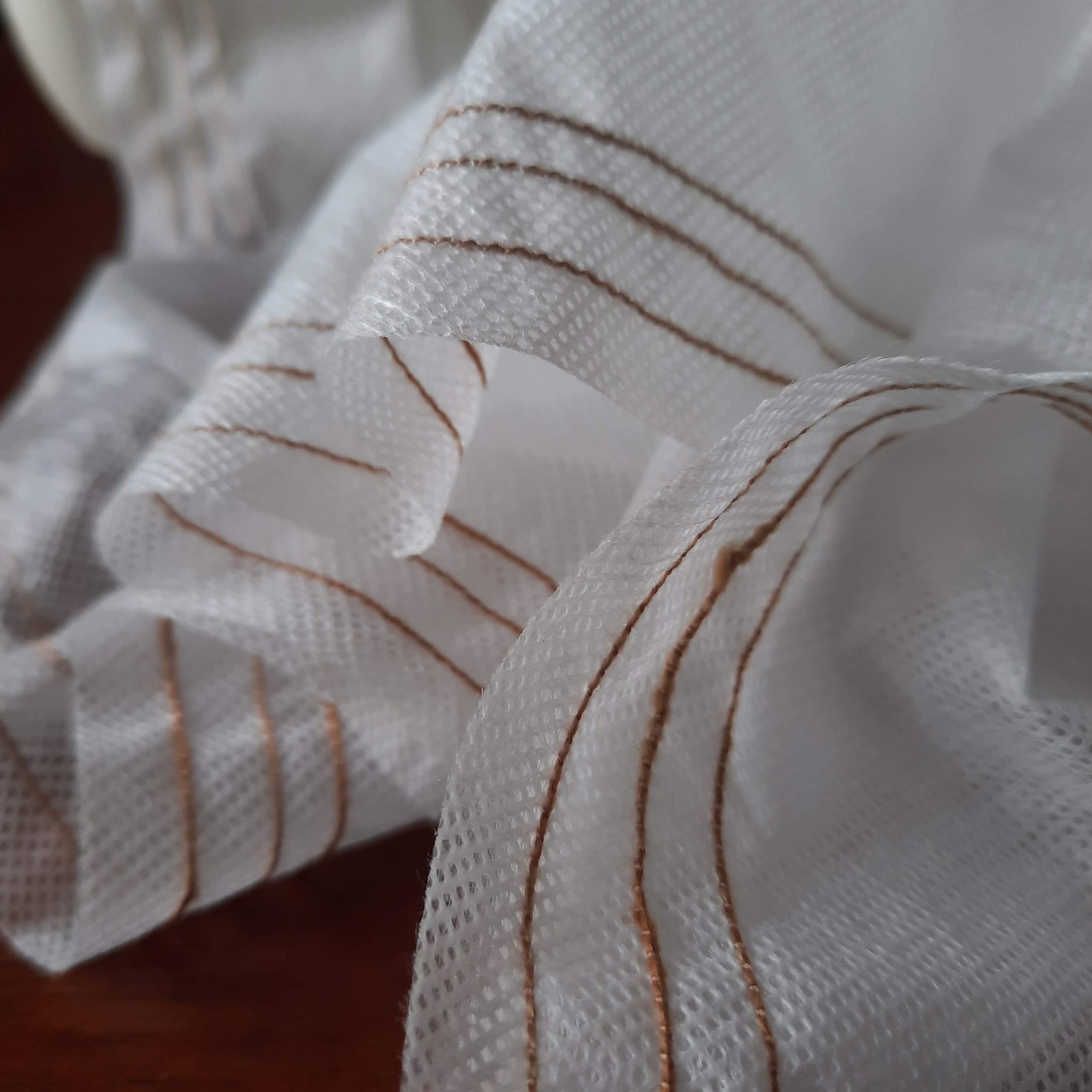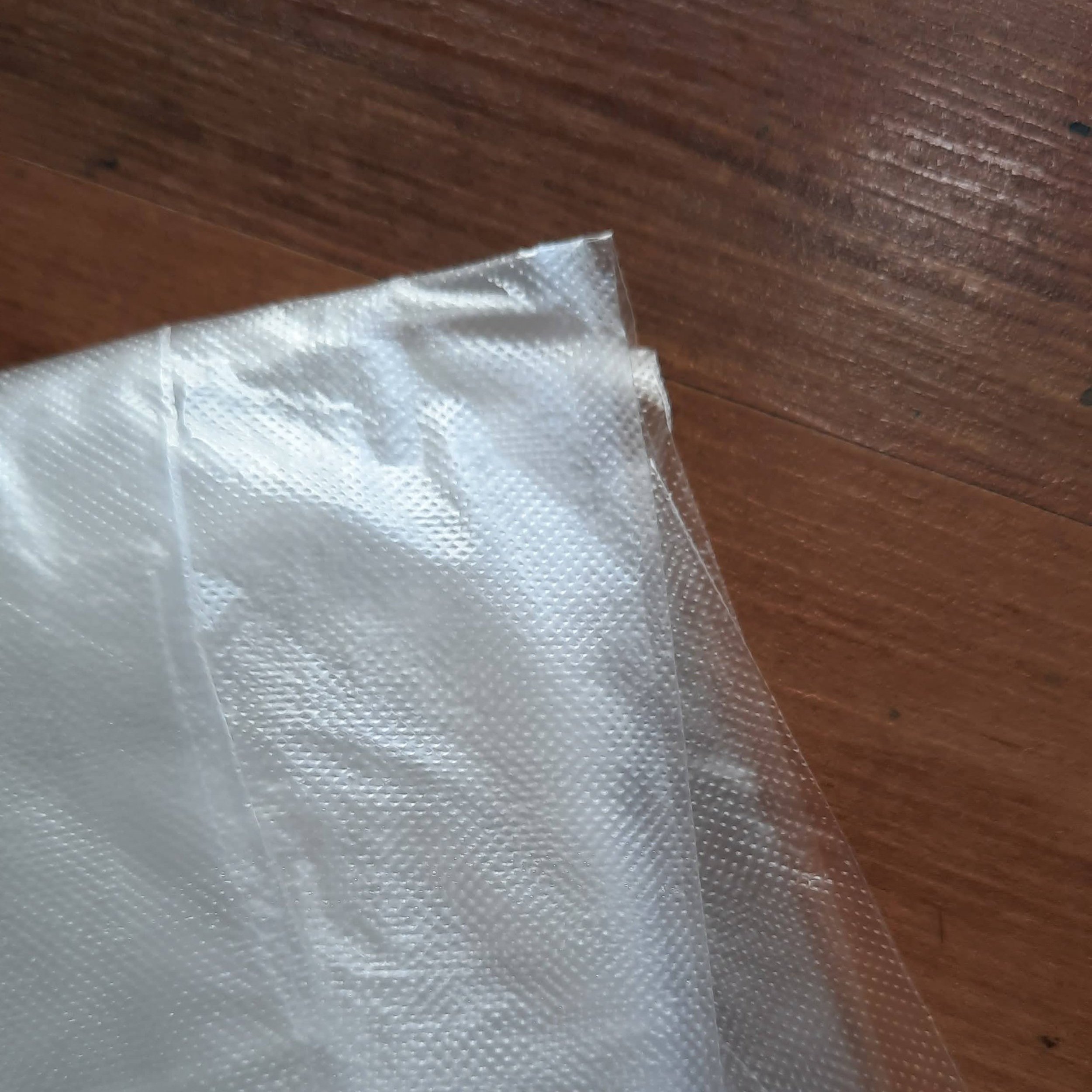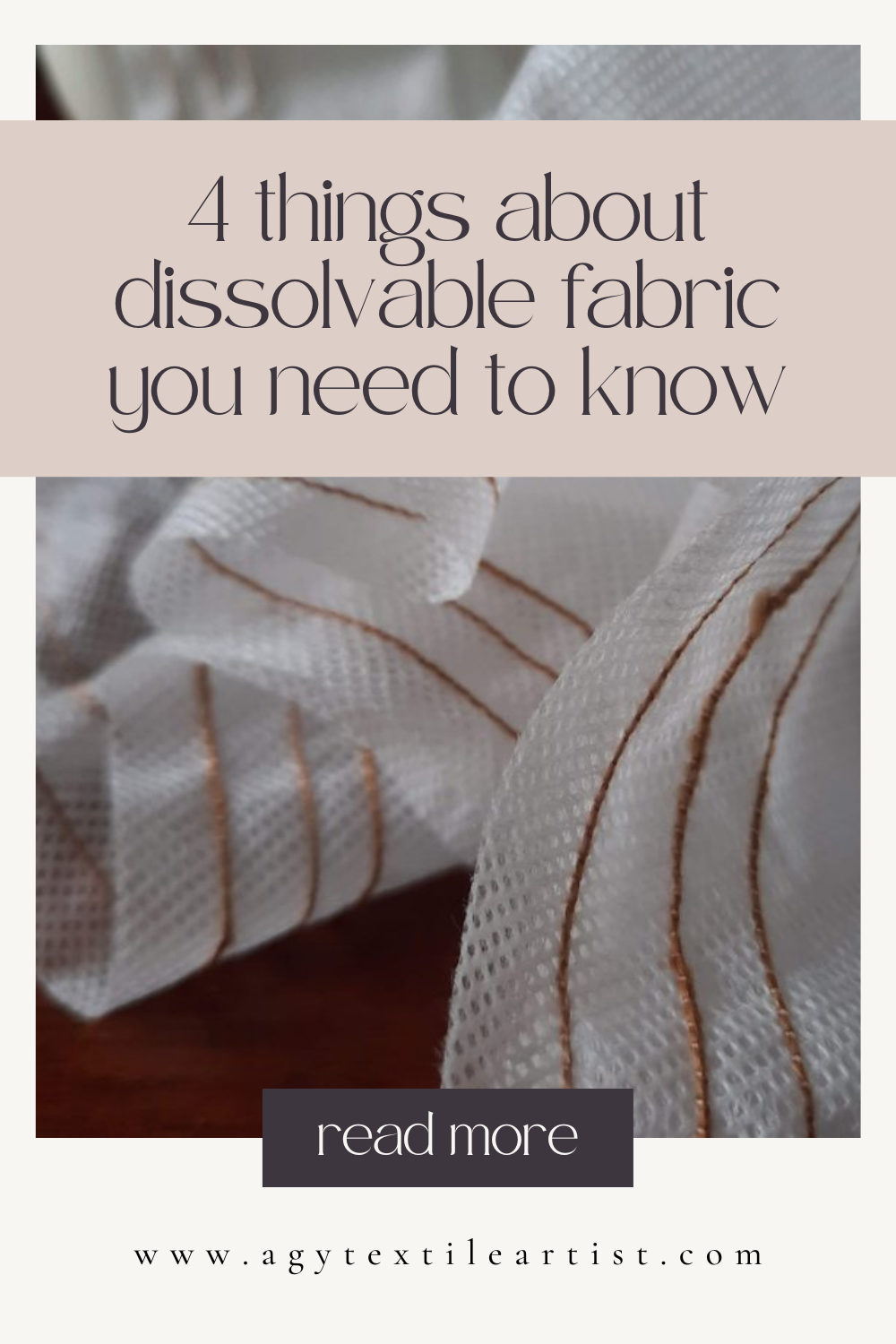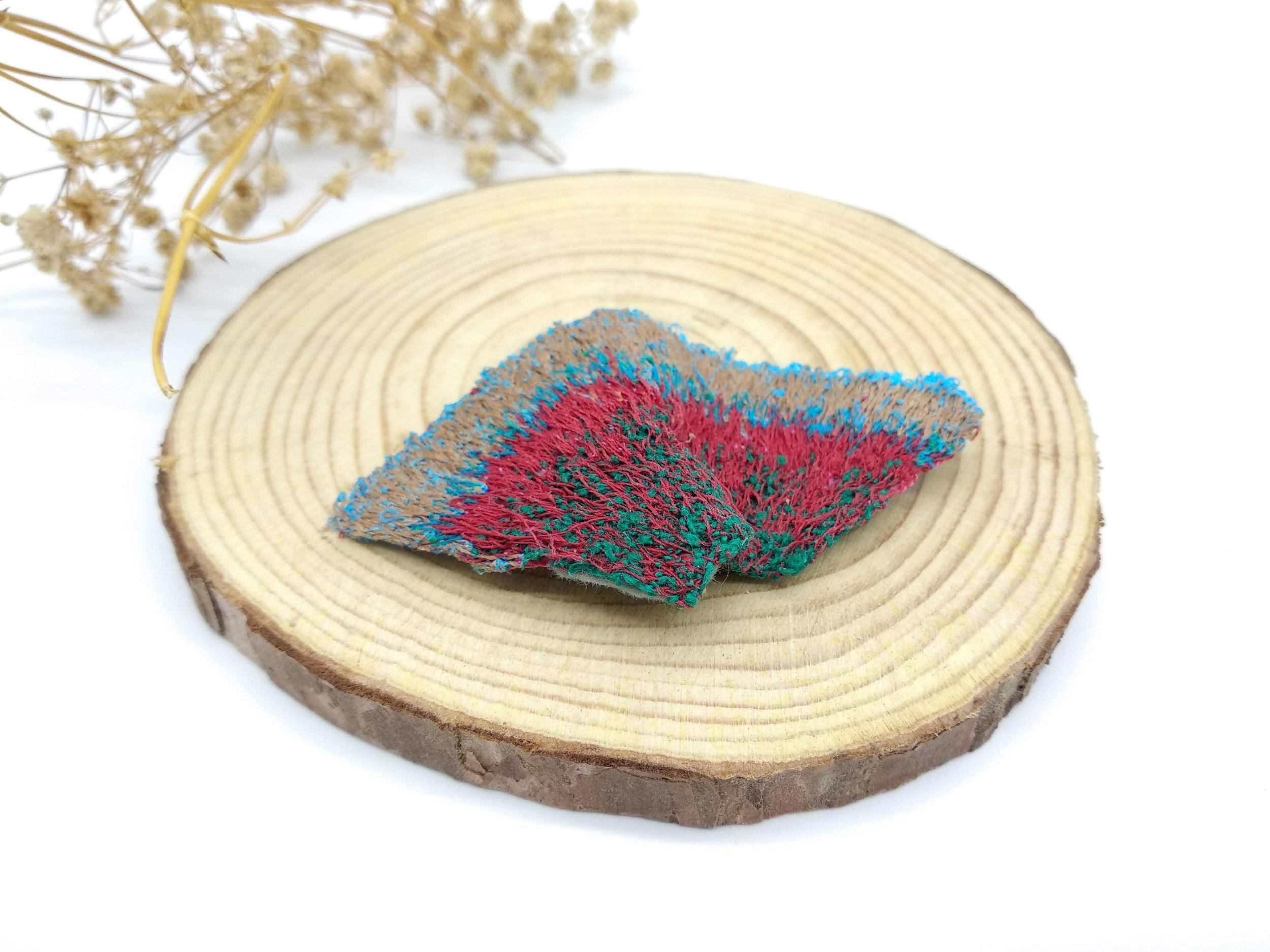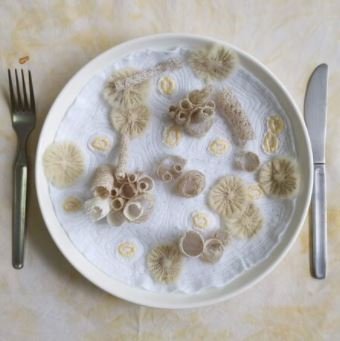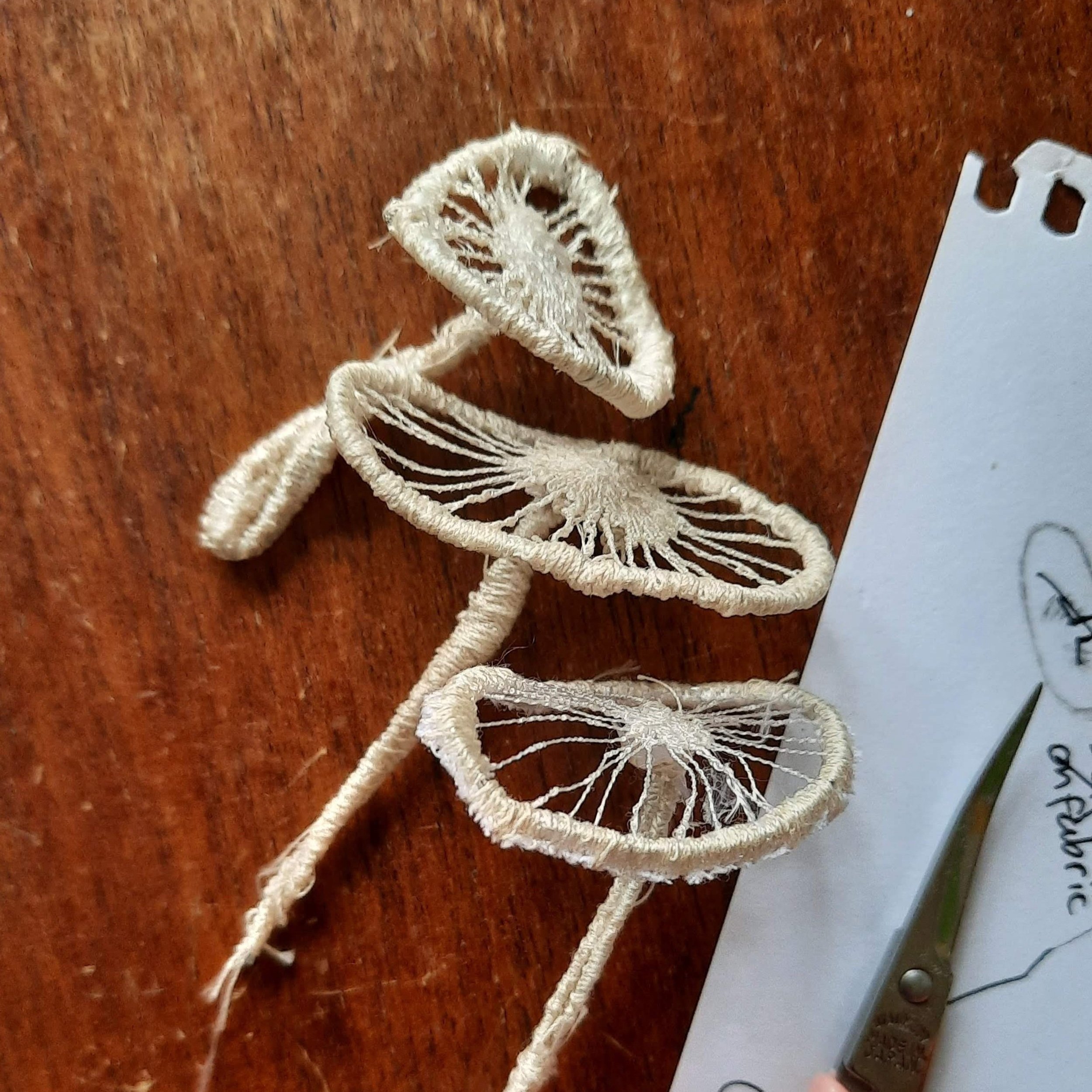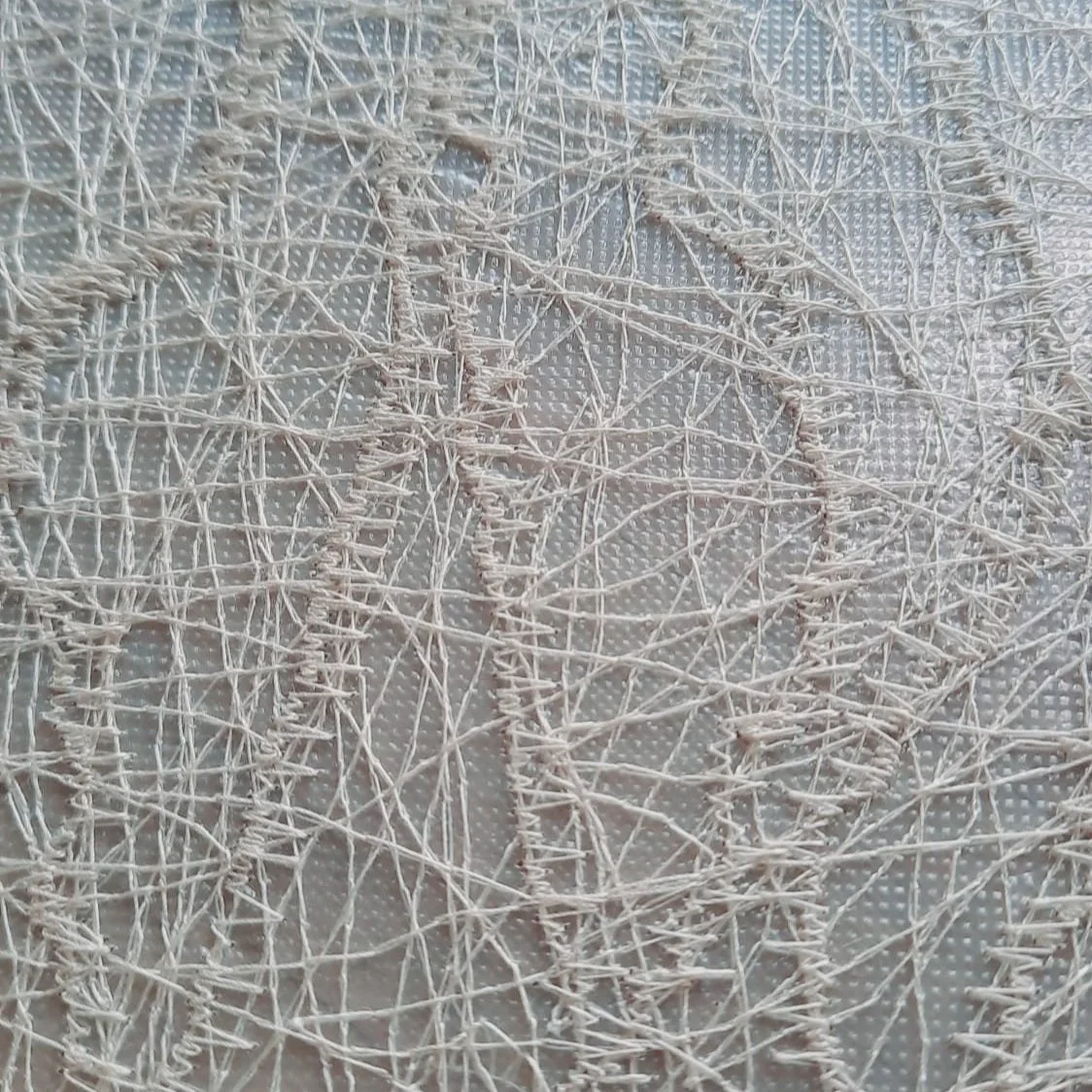Four Things About Dissolvable Fabric You Need to Know
What is Dissolvable Fabric?
Have you tried using dissolvable fabric (aka water soluble fabric) in your textile art? I’ve been using it for the past few years for my free motion embroidery, and for my latest work for the Mancapat Exhibition (4 - 12 Dec 2021). I’ve found it to be extremely versatile and helpful in my art work. There are many brands, and (to be honest) I have found it difficult to navigate this world especially when it comes to choosing a suitable one for a project. Having said that, I’ve decided to pen down my thoughts, and I’ve grouped them into 2 types of dissolvable fabrics:
Fabric-like dissolvable fabrics
Aquafilm dissolvable fabrics
As you can see from the images above, they are just as their names suggests. One looks exactly like a white piece of fabric, sometimes like white interfacing, while the other is more like cling wrap or a plastic bag-type of texture. There are also different types of thicknesses for each type, and again each will have different uses in your artwork.
Both of these dissolvable fabrics are made from polyvinyl alcohol, which is a synthetic polymer made by stringing many molecules together with strong bonds (think of crocheting with beads!). I have wondered how the manufacturers can get two sheets of fabric with different physical attributes but have the same function. I found that the aquafilm fabric had additives as well as the polyvinyl alcohol, while the fabric-looking one didn’t. What the additives are? I’m not sure, and the label did not say.
Nevertheless, the resulting water dissolvable properties have allowed it to be used in many daily products including food (yes!), medication, paper, and even in the trending dissolvable plastic bags, laundry detergent strips and dissolvable laundry pods. In the fashion industry, we’ve even seen some amazing designs with the dissolvable fabrics, although I don’t think any normal person would wear them (unless you’re out to seek attention). Having said that, just think of the possibilities! Check out the collection by designer, Jef Montes.
2. Is Dissolvable Fabric Eco-Friendly and Safe?
This was one of the big questions that I had when I started to use them in my free motion embroidery work - they magically dissolve and “disappear” when you put them under a tap. But nothing ever truly goes away, they always go somewhere, or become something! So how safe are they? I scoured the internet, and this is the conclusion I came to (with added reference links for you to dig deeper):
It is biodegradable - according to an article on ScienceDirect in this link, polyvinyl alcohol can be biodegraded by certain bacteria. However, this bacteria is not ubiquitous in nature, which means it needs to be added to our water treatment facilities - see point 2.
It does not “negatively impact environmental health when water treatment facilities are available. Water treatment facilities contain the correct microbes to break down the material completely” My question is, how can I be sure?
It appears to be safe - according to this piece of research, when administered orally polyvinyl alcohol is relatively harmless. I think we can therefore assume that it’s safe via other forms of contact too
What do you think? The research is out there but I’m wary of how things will turn out a few years down the line and suddenly, it’s not all what it seems too.
3. What Can Dissolvable Fabric Be Used For?
As an artist, these fabrics have allowed me to achieve two things with my textile art, and it’s really pushed my creative boundaries:
Creating my own textile structures / shapes
Creating my own fabric
Creating my own structures
Dissolvable fabrics are one of my favourite free motion embroidery sewing must-haves for creating 3D structures because the polyvinyl alcohol within the dissolvable acts like a glue to hold the threads together (other than your stitches). Depending on the tension of your stitches and how much of the dissolvable fabric you wash off, you can create great shapes. There will be a lot of trial and error with the experimentation. In this instance I prefer the aqua film. Here’s a sample of what I’ve created with the dissolvables, and I’m sure there’s much more to be explored!
From left to right:
coral brooches structured using free motion embroidery and aqua film
parts of the coral work in Bowls of Fragility were made using free motion embroidery on aqua film
experimental work using dissolvable fabric
Creating my own fabric
Using dissolvable fabric is one of the best ways of creating fabric collages and using up your own scraps and your ORTS (scrap threads). The best dissolvable that I have used is the aqua film as it allows you to sandwich your scraps and be able to see where you’re sewing. You can use the fabric-like dissolvable fabric, but this would mean you are not creating a sandwich in your initial set up for the free motion embroidery.
Fabric collage made using dissolvable fabric and free motion embroidery
Fabric made using dissolvable fabric
4. How Do You Store Dissolvable Fabrics?
It’s a love-hate relationship with the dissolvables when it comes to storage because it really is a struggle between keeping them dry, but then not wanting it to be too dry.
Keep airtight - due to the high humidity in Singapore, I store mine in an airtight container / ziplock bag, and always ensure I only take it out when I really need to use it.
Store separately - I keep the aquafilms and the fabric types separate from each other.
DO NOT use silica bead desiccants in your container. I learnt the hard way - after about a year, the aqua film cracked and was not supple enough to be used in an embroidery hoop. It ended up being a waste of money, and heartbreak as I had to throw it away.
Do use dry hands to handle the fabrics. This is common sense, but there were times that I was not careful enough. A small drop of water from your hand after washing your hands will go through 2, if not one layer of the dissolvable fabric, and there will be a hole.
Only buy what you need. This stems from the above points. It’s very easy to buy a lot of dissolvable fabrics for the just in case scenarios. But if you have a haberdashery that is able to supply and ship you the product quickly, then do this option. Unfortunately, I don’t have the right conditions in my home to ensure that the product will not deteriorate, and I can’t afford to have the air-conditioning on 24/7 so I only buy it when I have a project or I’m experimenting.
Where to get dissolvable fabric and other sewing supplies if you’re in Singapore
If you’re in other parts of the world, they are available on Amazon, Whalleys in the UK and also Spotlight.
Do you have any questions about the dissolvable fabrics?
Do you want to learn how to use them?
Let me know in the comments.
Read more about how to sew with dissolvable fabrics
Read more

